The Canon XA70 Professional UHD 4K Camcorder is a compact, lightweight camera featuring UHD 4K capture, a 1″ CMOS sensor, two XLR audio inputs, and one mini-HDMI output which fits right into the ENG category for documentary or journalism-style productions. Updated from its XA55 predecessor, this model features a larger 3.5mm LCD capacitive touchscreen display, a higher resolution tiltable 0.36″ OLED EVF, OSD metadata recording, and fast USB Type-C video-only output with UVC support for livestreaming to a computer.
The lens optics include an integrated 15x HD optical zoom, a nine-bladed circular iris for more natural highlights, and wide DR gamma support for low-light recording. The camera’s pro-style features include Dual-Pixel and Contrast autofocus, fast- and slow-motion recording, full manual control, optical and electronic image stabilization, a 3.5″ touchscreen LCD, user-assignable buttons, infrared mode, and a DIG!C DV 6 image processor with high sensitivity and low noise. The XA70 also has display monitoring features such as zebra, color bars, and test tone, plus a built-in neutral density filter mechanism.
The camera records UHD 4K30 and Full HD 1080p60 captured to dual SD card slots in XF-AVC and MP4 formats, and it outputs to a mini-HDMI port. The dual SD card slots allow for automatic switching from one card to another, as well as simultaneous recording to both. The camera can output up to 1920 x 1080p 10-bit 4:2:2 video at 59.94 fps via its mini-HDMI output. On the audio side, the XA70 features up to four channels of LPCM audio with manual/automatic recording levels, two XLR inputs with phantom power, and a 3.5mm stereo mini input. It features a built-in stereo microphone as well as a headphone jack and a 2.5mm LANC input for control.

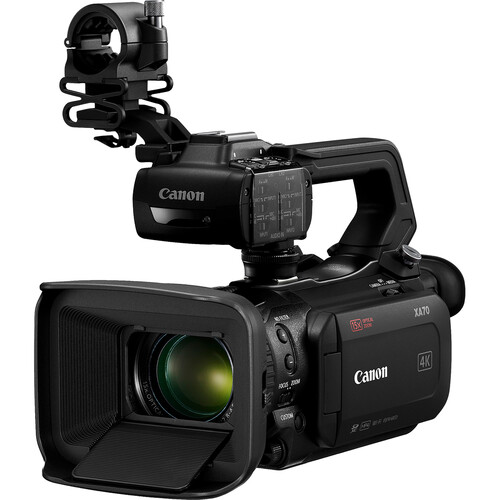


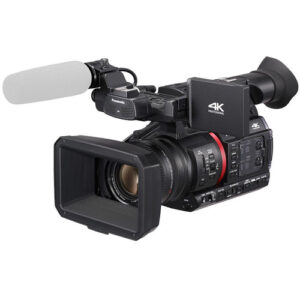
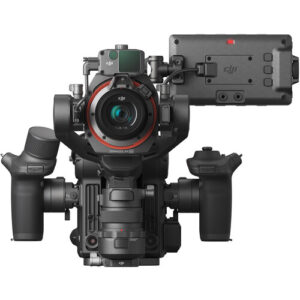
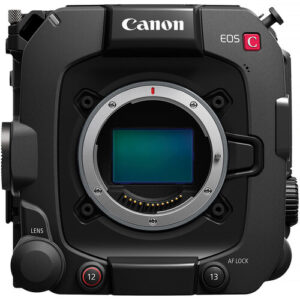
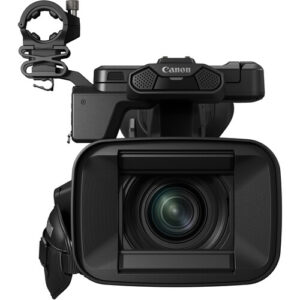

Lewis –
I am very pleased with this camera, small enough not to be noticed but powerful enough for broadcast television. Overall it’s a fantastic camera.
Lewis –
Nick –
Great camcorder with professional functions and quality. Love the USB -C ports. I can hook up a power cord with a 30w output charger and use it for hours without stopping. Easy to operate.
Nick –
Phillip –
Great features and great canon color, with the 1 inch sensor for easy bokah shots
Phillip –
Daniel –
Seems to be a well built unit and it does a really good job with video. Built in audio is average, so an external mic is necessary for me but it has both XLR and TRS options which is nice. You do not need to remove the mono/tripod mounting plate to change the battery, as some have noted. If you have an adjustable mounting plate (like the ones on my Manfrotto units), insert a small object into the open slot and slide the battery catch. This will release the battery and you can just insert a new one. Solid camcorder for the price.
Daniel –
Matthew –
I’m a longtime user of Canon camcorders and SLR’s. I believe there’s a place and time for a camcorder and SLR. In my opinion, live events are not the place or time for an SLR for video capture. As long as you are okay with 30p 4k, this camera blows any SLR out of the water for live events.
You can film a wedding, dance recital, play, religious service, mitzvah or other event from virtually any distance discreetly and get amazing footage. The built in lens that allows for smooth zooming in or out as needed is mandatory for live-streaming (or production of an event in post without interruption).
The image this camera produces rivals that of an SLR with amazing depth-of-field and stunning low light performance, all thanks to the 1 sensor. If you film weddings often, you’ll love this camera in low light. It is the best and is on par with my Canon R6 mirrorless cameras in low light… if not even better.
SLR vs. camcorder aside, this camera is in a class all its own when it comes to portability, ease of use and performance for a beginner or advanced operator. I have experience with other Sony and Panasonic camcorders that also feature 1 sensors. They’re great cameras in their own right. But the XA-70 packs so much into such a small body at such a great price point, that it’s a no-brainer for me.
A comparable camera is the Sony PXW-Z90V… and the ONLY competition for the XA-70. The XA-70 produces a better image (in my opinion), performs better in low light and is easier to use. It’s also a bit smaller than the Sony (important if you have to fly often for gigs) and is $500 cheaper.
Again, no-brainer.
If you need 4k 60, you’re stuck with an SLR or the Panasonic HC-X2 or Canon XF605. Both are huge cameras… twice the size of the XA-70. But if you must get a camcorder that shoots 4k 60 and size is not a factor, I’d recommend the HC-X2 (costs way less than the XF605 and does the same thing with equal results).
As for the XA-70, I like it because its image (at 4k30) is sharper and brighter than any other camcorder I’ve mentioned in this review. It has all of the pro features I need for any type of shoot for live-streaming, XLR inputs, image control, etc… but at the same time, I can put this puppy in full auto and hand it to a novice and with a little instruction, they can also film great footage with ease.
The image stabilization in this camera is the best of any other camcorder or SLR I’ve used, ever, and beats all of the other cameras I’ve listed in this review… in some cases, by far. The face detection tech is also the best of any other camera I’ve used. You don’t need a gimbal with this camera like you do an SLR. You can pan and tilt by hand and get amazingly smooth shots. You can’t do that with SLR’s, especially filming in 4k60.
The menu can be accessed either via onscreen or with a physical button and control knob on the camera… so if you don’t like using on-screen touch controls (or vice versa), you’ll be happy with this camera.
The ONLY negatives… and these are all minor for my needs:
-No 4k60
-Battery release is on the bottom of the camera
-Larger than an SLR
4k60, for me, is only needed for super slow motion shots. I can accomplish this with a new DJI OsmoPocket 3 if needed (in my pocket!… and amazing, btw). I don’t need this often though. The image stabilization in the XA-70 is so good, I can get enough slow motion out of the footage even at 30p for my needs.
The battery release being on the bottom of the camera can be a pain. If you’re on a tripod and have to resort to battery power for a lengthy shoot, you’ll need a break at least every 3 hours to swap batteries. Speaking of which… the battery time is amazing with the BP828. A new battery will yield over 230 minutes of filming time. That number degrades by about 30 minutes after a year of heavy use (as with any other quality battery). For newbies out there, I ONLY recommend OEM batteries for any of your gear. Off-brand batteries lead to trouble, trust me. Saving a few bucks is not worth the headache. Always go OEM.
The battery release issue isn’t a major problem for me… if we have to film an event that’s more than 3 hours long (very rare), I just plug the external power in and bypass using batteries anyway.
Finally… size… it’s not as convenient as an SLR… but when you factor in all the different lenses you need for an SLR, the XA-70 wins here, hands down. You don’t need any external lenses for this camera. You can film from 6 inches away or 100 feet away with the lens built in on this camera.
Compared to any other camcorder with a 1 lens (currently at the end of 2023), this is the smallest body you’re going to find. I can fit two of these in a Pelican 1535 carry-on case, along with any other necessary gear for a weeklong shoot (batteries, mics, etc.). That makes me a happy camper. Most other 1 camcorders will require a case all to themselves for travel (although you can also squeeze two of the aforementioned Sony’s into a case if Sony is your cup of tea).
For the Canon reps reading this post for feedback… if you can come up with a battery release on the back of the camera and squeeze in 4k60 into the next iteration, I’ll buy 10 of them on the spot and be set for the next decade.
Ideally, a form factor/footprint closer to the XA-10 would be great, but that’s nitpicking (or workhorse of the last decade).
The XA-70 is a fantastic camcorder with a 1 sensor and the only choice in this segment in my opinion.
For those wondering what the difference is from the XA-50, the 70 has a a bigger and more vibrant LCD, gets longer battery life out of the BP828 battery and, in my experience, has much better image stabilization.
Matthew –
Aaron –
Perfect camera for paranormal investigations. Has everything you’d need for recording sessions. Black and white or green for your infrared videos. Meets the specifications I wanted for a great quality video. Recommend buying the higher mah batteries for longer recording times.
Aaron –